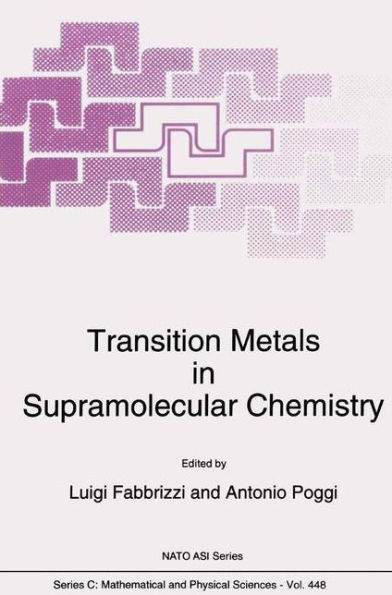5
1
9789048144839



Transition Metals in Supramolecular Chemistry / Edition 1 available in Hardcover, Paperback

Transition Metals in Supramolecular Chemistry / Edition 1
- ISBN-10:
- 9048144833
- ISBN-13:
- 9789048144839
- Pub. Date:
- 12/07/2010
- Publisher:
- Springer Netherlands
- ISBN-10:
- 9048144833
- ISBN-13:
- 9789048144839
- Pub. Date:
- 12/07/2010
- Publisher:
- Springer Netherlands

Transition Metals in Supramolecular Chemistry / Edition 1
$219.99
Current price is , Original price is $219.99. You
219.99
In Stock

Product Details
| ISBN-13: | 9789048144839 |
|---|---|
| Publisher: | Springer Netherlands |
| Publication date: | 12/07/2010 |
| Series: | Nato Science Series C: , #448 |
| Edition description: | Softcover reprint of hardcover 1st ed. 1995 |
| Pages: | 436 |
| Product dimensions: | 6.10(w) x 9.25(h) x 0.04(d) |
From the B&N Reads Blog
